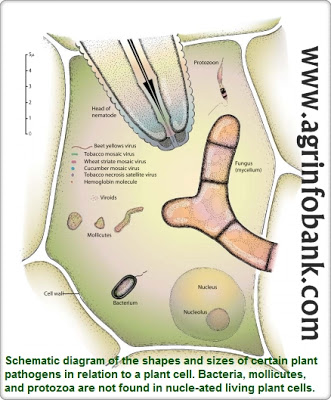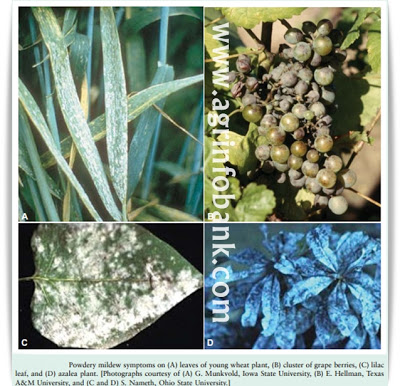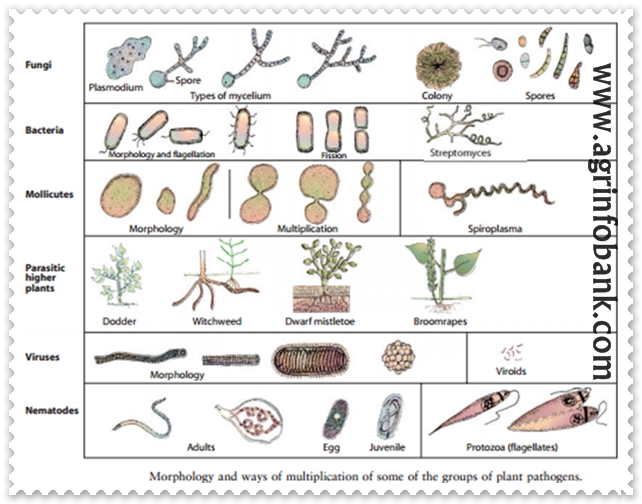Agriculture



- The Mechanisms By Which Pathogens Cause Disease
Plant diseases cause a huge loose of fruits, vegetables and crops since long time ago, historically diseases causes huge loose that leads to the dead of millions of peoples on earth. During early peoples, not know the causes of diseases, they were considering...
- Mollicutes (phytoplasmas)
For nearly 70 years after viruses were discovered, many plant diseases were described that showed symptoms of general yellowing or reddening of the plant or of shoots proliferating and forming structures that resembled witches? brooms. These diseases...
- Cultural Methods Of Vegetable Disease Control
Most vegetables are susceptible to one or more diseases. You can, therefore, anticipate disease problems sooner or later in your vegetable garden. By following good cultural practices and taking preventive measures, your chances of garden failure due...
- Plants And Disease
Plants make up the majority of the earth?s living environment as trees, grass, flowers, and so on. Directly or indirectly, plants also make up all the food on which humans and all animals depend. Even the meat, milk, and eggs that we and other carnivores...
- Last Night Experoence
Last night at my county fair grounds I got to watch them test chickens for certain diseases. They would prick the inside of the chickens wing a little blood would come out, she took the needle and put the blood on a ceramic tile. After she got the chicken...
Agriculture
Types of Plant Diseases
Tens of thousands of diseases affect cultivated and wild plants. On average, each kind of crop plant can be affected by a hundred or more plant diseases. Some pathogens affect only one variety of a plant. Other pathogens affect several dozen or even hundreds of species of plants. Plant diseases are sometimes grouped according to the symptoms they cause (root rots, wilts, leaf spots, blights, rusts, smuts), to the plant organ they affect (root diseases, stem diseases, foliage diseases), or to the types of plants affected (field crop diseases, vegetable diseases, turf diseases, etc.).

One useful criterion for grouping diseases is the type of pathogen that causes the disease. The advantage of such a grouping is that it indicates the cause of the disease, which immediately suggests the probable development and spread of the disease and also possible control measures. On this basis, plant diseases are classified as follows:
I. Infectious, or biotic, plant diseases
1. Diseases caused by fungi.
2. Diseases caused by prokaryotes (bacteria and mollicutes).
3. Diseases caused by parasitic higher plants and green algae
4. Diseases caused by viruses and viroids.
5. Diseases caused by nematodes.
6. Diseases caused by protozoa.

II. Noninfectious, or abiotic, plant diseases.
1. Diseases caused by too low or too high a temperature
2. Diseases caused by lack or excess of soil moisture
3. Diseases caused by lack or excess of light
4. Diseases caused by lack of oxygen
5. Diseases caused by air pollution
6. Diseases caused by nutrient deficiencies
7. Diseases caused by mineral toxicities
8. Diseases caused by soil acidity or alkalinity(pH)
9. Diseases caused by toxicity of pesticides
10. Diseases caused by improper cultural practices

- The Mechanisms By Which Pathogens Cause Disease
Plant diseases cause a huge loose of fruits, vegetables and crops since long time ago, historically diseases causes huge loose that leads to the dead of millions of peoples on earth. During early peoples, not know the causes of diseases, they were considering...
- Mollicutes (phytoplasmas)
For nearly 70 years after viruses were discovered, many plant diseases were described that showed symptoms of general yellowing or reddening of the plant or of shoots proliferating and forming structures that resembled witches? brooms. These diseases...
- Cultural Methods Of Vegetable Disease Control
Most vegetables are susceptible to one or more diseases. You can, therefore, anticipate disease problems sooner or later in your vegetable garden. By following good cultural practices and taking preventive measures, your chances of garden failure due...
- Plants And Disease
Plants make up the majority of the earth?s living environment as trees, grass, flowers, and so on. Directly or indirectly, plants also make up all the food on which humans and all animals depend. Even the meat, milk, and eggs that we and other carnivores...
- Last Night Experoence
Last night at my county fair grounds I got to watch them test chickens for certain diseases. They would prick the inside of the chickens wing a little blood would come out, she took the needle and put the blood on a ceramic tile. After she got the chicken...
